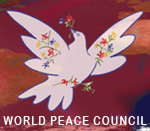The Genocide Myth - The Uses and Abuses of "Srebrenica"
| Activities - Comments |
By Srdja Trifkovic <https://www.alternativeright.com/authors/srdja-trifkovic/>
On July 11, the constituent nations of Bosnia-Herzegovina -- no longer warring, but far from reconciled -- will mark the 15th anniversary of “Srebrenica.” The name of the eastern Bosnian town will evoke different responses from different communities, however. The difference goes beyond semantics. The complexities of the issue remain reduced to a simple morality play devoid of nuance and context.
That is exactly how the sponsors of the “Srebrenica Remembrance Day” <https://www.bosniak.org/parliament-of-canadas-bill-c%E2%80%93533-in-honor-of-srebrenica-genocide-remembrance> -- currently before the Canadian House of Commons -- want it to be:
Whereas the Srebrenica Massacre, also known as the Srebrenica Genocide, was the killing in July of 1995 of an estimated 8,000 Bosniak men and boys in the region of Srebrenica in Bosnia and Herzegovina by Bosnian Serb forces;
Whereas the Srebrenica Massacre is the largest mass murder in Europe since World War II and the largest massacre carried out by Serb forces during the Bosnian war;
Whereas the Appeals Chamber of the International Criminal Tribunal for the former Yugoslavia, located in The Hague, unanimously decided in the case of Prosecutor v. Krstić that the Srebrenica Massacre was genocide…
The trouble is that the event known to the bill’s sponsors as the “Srebernica genocide” was no such thing. The contention that as many as 8,000 Muslims were killed has no basis in available evidence; it is not an “estimate” but a political construct. The magnitude of casualties at Srebrenica and the context of events have been routinely misrepresented in official reports by the pro-Muslim governments, quasi-non-governmental institutions, and the media.
As for The Hague Tribunal, an Orwellian institution with which I am well acquainted <https://www.chroniclesmagazine.org/index.php/2008/09/23/witnessing-at-the-hague> , its “unanimous decisions” are as drearily predictable as those in Moscow in 1936. It is not known to the public, however, that those “decisions” are now disputed by a host of senior Western military and civilian officials, NATO intelligence officers and independent intelligence analysts who dispute the official portrayal of the capture of Srebrenica as a unique atrocity in the Bosnian conflict.
The Facts -- During the Bosnian war between May 1992 and July 1995, several thousand Muslim men lost their lives in Srebrenica and its surroundings. Most of them died in July of 1995 when the enclave fell unexpectedly to the Bosnian Serb Army and the Muslim garrison attempted a breakthrough. Some escaped to the Muslim-held town of Tuzla, 38 miles to the north. Many were killed while fighting their way through; and many others were taken prisoner and executed by the Bosnian Serb army.
The exact numbers remain unknown, disputed, and misrepresented. With 8,000 executed and thousands killed in the fighting, there should have been huge gravesites and satellite evidence of both executions, burials, and any body removals. The UN searches in the Srebrenica vicinity, breathlessly frantic at times, produced two thousand bodies. They included those of soldiers killed in action -- both Muslim and Serb -- both before and during July 1995.
The Numbers Game -- In the documents of the Yugoslav War Crimes Tribunal at The Hague (ICTY) there is no conclusive breakdown of casualties. That a war crime did take place, that hundreds of Muslim prisoners were killed, is undeniable. The number of its victims remains forensically and demographically unverified, however. According to the former BBC reporter Jonathan Rooper, <https://www.srebrenica-report.com/numbers.htm> “from the outset the numbers were used and abused” for political purposes:
Over the years it has been held to be highly significant that original ballpark estimates for the number who might have been massacred at Srebrenica corresponded closely to the ‘missing’ list of 7,300 compiled by the International Committee of the Red Cross (ICRC). But the early estimates were based on nothing more than the simple combination of an estimated 3,000 men last seen at the UN base at Potocari and an estimated 5,000 people reported ‘to have left the enclave before it fell.’ [ ... ] Perhaps the most startling aspect of the 7-8,000 figure is that it has always been represented as synonymous with the number of people executed. This was never a possibility: numerous contemporary accounts noted that UN and other independent observers had witnessed fierce fighting with significant casualties on both sides. It was also known that others had fled to Muslim-held territory around Tuzla and Zepa, that some had made their way westwards and northwards, and that some had fled into Serbia. It is therefore certain that nowhere near all the missing could have been executed.
The key problem of all is that the arithmetic does not add up. The International Committee of the Red Cross reported at the time that some 3,000 Bosnian Army soldiers managed to reach Muslim lines near Tuzla and were redeployed by the Bosnian Army “without their families being informed.” The number of military survivors was also confirmed by Muslim General Enver Hadzihasanovic in his testimony at The Hague.
The last census results for Srebrenica, from 1991, counted 37,211 inhabitants in Srebrenica and the surrounding villages, of which 27,118 were Muslims (72.8 percent) and 9,381 Serbs (25.2 percent). Displaced persons from Srebrenica registered with the World Health Organization and Bosnian government in early August 1995 totaled 35,632. With 3,000 Muslim men who reached Tuzla “without their families being informed” we come to the figure of over 38,000 survivors. The Hague Tribunal’s own estimates of the total population of the Srebrenica enclave before July 1995 -- notably that made by Judge Patricia Wald -- give 40,000 as the maximum figure. The numbers don't add up.
Furthermore, despite spending five days interviewing over 20,000 Srebrenica survivors at Tuzla a week after the fall of the enclave, the UN High Commissioner for Human Rights Henry Wieland declared <https://www.freerepublic.com/focus/f-news/1826404/posts> , “we have not found anyone who saw with their own eyes an atrocity taking place.” A decade later Dr Dick Schoonoord of the Nederlands Instituut voor Oorlogsdoumentatie (NIOD) confirmed <https://www.srebrenica-report.com/numbers.htm> Wieland’s verdict: “It has been impossible during our investigations in Bosnia to find any people who witnessed the mass murder or would talk about the fate of the missing men.”
A UN-Protected Jihadist Camp – It is often pointed out that Srebrenica was an UN “protected zone,” but it is seldom noted that the enclave was simultaneously an armed camp used for attacks against Serb villages in the surrounding areas. Muslim General Sefer Halilovic confirmed in his testimony at the Hague Tribunal that there were at least 5,500 Bosnian Army soldiers in Srebrenica after it had obtained the “safe haven” status, and that he had personally arranged numerous deliveries of sophisticated weapons by helicopter.
French General Philippe Morillon, the UNPROFOR commander who first called international attention to the Srebrenica enclave, is adamant that <https://www.srebrenica-project.com/index.php?option=com_content&view=article&id=1:2009-01-07-18-16-23&catid=3:2009-01-06-17-56-50&Itemid=4> the crimes committed by those Muslim soldiers made the Serbs’ desire for revenge inevitable. He testified at The Hague Tribunal on February 12, 2004, that the Muslim commander in Srebrenica, Naser Oric, “engaged in attacks during Orthodox holidays and destroyed villages, massacring all the inhabitants. This created a degree of hatred that was quite extraordinary in the region.”
Asked by the ICTY prosecutor how Oric treated his Serb prisoners, General Morillon, who knew him well, replied that “Naser Oric was a warlord who reigned by terror in his area and over the population itself”: “According to my recollection, he didn’t even look for an excuse. It was simply a statement: One can’t be bothered with prisoners.”
Professor Cees Wiebes, who wrote the intelligence section of the Dutch Government report on Srebrenica, notes that despite signing <https://www.spiked-online.com/articles/0000000CA374.htm> the demilitarization agreement, Bosnian Muslim forces in Srebrenica were heavily armed and engaged in provocations (“sabotage operations”) against Serbian forces. Professor Wiebes, a senior lecturer in the Department of International Relations at Amsterdam University, caused a storm with his book Intelligence and the War in Bosnia 1992-1995, detailing the role of the Clinton administration in allowing Iran to arm the Bosnian Muslims. Wiebes catalogues how, from 1992 to January 1996, there was an influx of Iranian weapons and advisers into Bosnia. By facilitating the illegal transfer of weapons to Bosnian Muslim forces and turning a blind eye toward the entry of foreign Mujahadeen fighters, the US turned supposed safe zones for civilians into staging areas for conflict and a tripwire for NATO intervention. Dr Wiebes notes that the U.S. Defense Intelligence Agency facilitated the transfer of illegal arms from Muslim countries to the Tuzla airport using Hercules C-130 transport planes. It arranged for gaps in air surveillance by AWACs, which were supposed to guard against such illegal arms traffic. Along with these weapons came Mujahadeen fighters from both Iranian training camps and al-Qaeda, including two of the hijackers involved in the attacks on the World Trade Center and Khaled Sheik Mohammed who helped plan the attack.
Cui bono? -- On 11 July, 1995, the Muslim garrison was ordered to evacuate the town which the Serbs entered unopposed. Local Deputy Director of UN Monitors, Carlos Martins Branco, wrote in 2004 (“Was Srebrenica a Hoax?” <https://www.globalresearch.ca/index.php?context=va&aid=731> ) that Muslim forces did not even try to take advantage of their heavy artillery because “military resistance would jeopardize the image of ‘victim,’ which had been so carefully constructed, and which the Muslims considered vital to maintain.”
Two prominent Muslim allies of the late Bosnian President Alija Izetbegovic, his Srebrenica party chairman Ibran Mustafic and police commander Hakija Meholjic, have subsequently accused Izetbegovic of deliberately sacrificing the enclave in order to trigger NATO intervention. Meholjic is explicit: in his presence, Izetbegovic quoted Bill Clinton <https://www.ex-yupress.com/dani/dani2.html> as saying that 5,000 dead Muslims would be sufficient to provide the political basis for an American-led intervention on the side of the Muslims, which both of them wanted.
In their testimony before The Hague Tribunal, Bosnian Muslim Generals Halilovic and Hadzihasanovic confirmed that 18 top officers of the Srebrenica garrison were abruptly removed in May 1995. This was done even as the high command was ordering sabotage operations against Bosnian Serbs. One of these was a militarily meaningless attack on a strategically unimportant nearby Serb village of Visnica, which triggered off the Serb counter-attack which captured the undefended town. Ibran Mustafic, the former head of the Muslim SDA party in Srebrenica, is adamant that the scenario for the sacrifice of Srebrenica was carefully prepared:
Unfortunately, the Bosnian presidency and the Army command were involved in this business … Had I received orders to attack the Serb army from the demilitarized zone, I would have rejected to carry out that order. I would have asked the person who had issued that order to bring his family to Srebrenica, so that I can give him a gun let him stage attacks from the demilitarized zone. I knew that such shameful, calculated moves were leading my people to catastrophe. The order came from Sarajevo.
British military analyst Tim Ripley, who has written for Jane’s, agrees <https://www.srebrenica-report.com/conclusions.htm> with the assessment that Srebrenica was deliberately sacrificed by the Muslim political leaders. He noted that Dutch UN soldiers “saw Bosnian troops escaping from Srebrenica past their observation points, carrying brand new anti-tank weapons [which] made many UN officers and international journalists suspicious."
The G-Word -- The term “genocide” is even more contentious than the exact circumstances of Srebrenica’s fall. Local chief of UN Monitors, Carlos Martins Branco, noted that if there had been a premeditated plan of genocide,
instead of attacking in only one direction, from the south to the north -- which left the hypothesis to escape to the north and west, the Serbs would have established a siege in order to ensure that no one escaped. The UN observation posts to the north of the enclave were never disturbed and remained in activity after the end of the military operations. There are obviously mass graves in the outskirts of Srebrenica as in the rest of ex-Yugoslavia where combat has occurred, but there are no grounds for the campaign which was mounted, nor the numbers advanced by CNN. The mass graves are filled by a limited number of corpses from both sides, the consequence of heated battle and combat and not the result of a premeditated plan of genocide, as occurred against the Serbian populations in Krajina, in the Summer of 1995, when the Croatian army implemented the mass murder of all Serbians found there.
The fact that The Hague Tribunal’s presiding judge, Theodor Meron, called the massacre in Srebrenica “genocide” does not make it so. What plan for genocide includes offering safe passage to women and children? And if this was all part of a Serb plot to eliminate Muslims, what about hundreds of thousands of Muslims living peacefully in Serbia itself, including thousands of refugees who fled there from Bosnia? Or the Muslims in the neighboring enclave of Žepa, who were unharmed when the Serbs captured that town a few days after capturing Srebrenica? To get around these common sense obstacles, the ICTY prosecution came up with a sociologist who provided an “expert” opinion: the Srebrenica Muslims lived in a patriarchal society, therefore killing the men was enough to ensure that there would be no more Muslims in Srebrenica. Such psychobabble turns the term “genocide” into a gruesome joke.
Yet it was on the basis of this definition that in August 2001, the Tribunal found Bosnian Serb General Radislav Krstic guilty of “complicity in genocide.” Even if the unproven figure of “8,000” is assumed, it affected less than one-half of one percent of Bosnia’s Muslim population in a locality covering one percent of its territory. On such form, the term “genocide” loses all meaning and becomes a propaganda tool rather than a legal and historical concept. On that form, America’s NATO ally Turkey <https://www.alternativeright.com/main/the-magazine/young-turks/> -- a major regional player in today’s Balkans -- certainly committed genocide in northern Cyprus in 1974. On that form, no military conflict ever can be genocide-free.
Because of the manner in which international criminal law is currently formulated, the threshold of proof required to secure a conviction for genocide is actually lower than it is for crimes against humanity. To secure a conviction for crimes against humanity the ICTY prosecution must prove that the acts were “widespread or systematic.” No such condition applies for genocide. Moreover, as British analyst John Laughland points out, crimes against humanity can be committed only against civilians, whereas genocide -- as redefined in the case of Srebrenica -- can include the killing of military personnel as well. In other words, spontaneous or disparate acts involving the killing of military personnel can be classified as “genocide.” This creates ample room for propagandistic abuse of the term.
Srebrenica as a Postmodernist Totem -- Laughland contends <https://www.balkanstudies.org/articles/srebrenica-genocide-totem-new-world-order> that the myth of the “Srebrenica Genocide” is essential to a program of international interventionism, based on weak legal reasoning and disregard for due process, of which the Serbs happen to be the guinea-pigs. In his view, Srebrenica has been raised to the status it now enjoys because its fall represented a defeat not only for the Bosnian Muslims but also for the “international community” and its policy of global interventionism:
Srebrenica was important -- at least for the supporters of interventionism -- because the UN was there, not just because it was a Muslim enclave. The United Nations as an institution, it must be remembered, had embarked in the 1990s on an aggressive policy of military, political and judicial interventionism in both Iraq and Yugoslavia. It continued to apply the highly intrusive sanctions regime against Iraq throughout the decade and into the 21st century, and of course was happy to become the administrator of Kosovo after 1999. Its own credibility, and that of the states which dictated its policies, was destroyed when the enclave fell.
The activists of judicial and military supra-nationalism, Laughland points out, were therefore determined to make the genocide charge stick somewhere. “Genocide” offers them two key legal advantages in pursuit of the goal of creating a new international system no longer based on state sovereignty. The first is the low threshold of proof mentioned above. The second legal advantage of genocide -- from the point of view of the project of creating a system of supranational coercive criminal law -- is that genocide, unlike crimes against humanity, is the subject of a binding international treaty, the 1948 Genocide Convention.
The importance of the existence of a treaty, as opposed to the existence of a norm in mere “customary international law” -- i.e. whatever judges or even academics say they think the law is -- was illustrated with the landmark ruling in the British House of Lords against General Pinochet, issued on 24 March, 1999, (the day the bombs started raining down on Yugoslavia). Activists for universal jurisdiction ratione materiae were very excited by this ruling because it seemed to confirm that even heads of state could be put on trial when certain kinds of crimes were alleged against them. ... Srebrenica, then, is an existential issue, not as much for Republika Srpska as for those activists who seek to consolidate once and for all that outcome which the former ICTY Prosecutor, Louise Arbour, said she had achieved in 1999: ‘We have passed from an era of cooperation between states to an era in which states can be constrained.’
Dr. Diana Johnstone, an American expert on the Balkans, has summed up the Arbour mindset neatly in a seminal “Counterpunch” article <https://www.counterpunch.org/johnstone10122005.html> :
The ‘Srebrenica massacre’ is part of a dominant culture discourse that goes like this: We people in the advanced democracies have reached a new moral plateau, from which we are both able and have a duty both to judge others and to impose our ‘values’ when necessary. The others, on a lower moral plateau, must be watched carefully, because unlike us, they may commit ‘genocide.’ It is remarkable how ‘genocide’ has become fashionable, with more and more ‘genocide experts’ in universities, as if studying genocide made sense as a separate academic discipline… The subliminal message in the official Srebrenica discourse is that because ‘we’ let that happen, ‘we’ mustn't let ‘it’ happen again, ergo, the United States should preventively bomb potential perpetrators of ‘genocide’.
But Why? -- Questioning the received elite class narrative on “Srebrenica” is a good and necessary endeavor. The accepted Srebrenica story, influenced by war propaganda and uncritical media reports, is neither historically correct nor morally satisfying. The relentless Western campaign against the Serbs and in favor of their Muslim foes -- which is what “Srebrenica” is really all about -- is detrimental to the survival of our culture and civilization. It seeks to give further credence to the myth of Muslim blameless victimhood, Serb viciousness, and Western indifference, and therefore weaken our resolve in the global struggle euphemistically known as “war on terrorism.” The former is a crime; the latter, a mistake.
The involvement of the Clinton administration in the wars of Yugoslav succession was a good example of the failed expectation that pandering to Muslim ambitions in a secondary theater will improve the U.S. standing in the Muslim world as a whole. The notion germinated in the final months of George H.W. Bush’s presidency, when his Acting Secretary of State Lawrence Eagleburger said that a goal in Bosnia was to mollify the Muslim world and to counter any perception of an anti-Muslim bias regarding American policies in Iraq in the period leading up to Gulf War I. The result of years of policies thus inspired is a terrorist base the heart of Europe, a moral debacle, and the absence of any positive payoff to the United States.
Former U.S. Under-Secretary of State Nicholas Burns declared on February 18, 2008, a day after Kosovo’s unilateral declaration of independence: “Kosovo is going to be a vastly majority Muslim state… and we think it is a very positive step that this Muslim state, Muslim majority state, has been created today.” If it is intrinsically “a very positive step” that a “vastly Muslim state” is created on European soil that had been cleansed of non-Muslims, it is only a matter of time before similar blessings are bestowed on Americans.
If Western and especially U.S. policy in the Balkans was not meant to facilitate Jihad, the issue is not why, but how its effects paradoxically coincided with the regional objectives of those same Islamists who confront America in other parts of the world. “Srebrenica” provides some of the answers. The immediate bill is being paid by the people of the Balkans, but “Srebrenica’s” long-term costs will come to haunt the West for decades to come.
| < Prev | Next > |
|---|
| Overstatement from Davos 2017. |
Liberal corporative capitalism, for reasons of lowering traveling costs, proposed not to travel to history alone but packed togather with NATO, EU and unipollar World Order. Workers participation has good chances to step in provisionally, buying time for full scale workers selfmanagment. |









